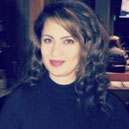
 Speaker "Qazaleh Mirsharif" Details Back
Speaker "Qazaleh Mirsharif" Details Back


-
Name
Qazaleh Mirsharif
-
Company
Figure Eight
-
Designation
Artificial Intelligence Researcher
Topic
Predictive bounding boxes: A machine learning powered image annotation tool for creating high quality training data for object detection
Abstract
The state of the art deep learning models for object detection require large volume of high quality training data to perform well. While the advances of data collection technology have enabled the acquisition of a massive volume of data, labeling the data remains an expensive and time-consuming task In this study, we propose a new interface for bounding box annotation which uses machine learning to accelerate the annotation and increase the quality of training data, lowering cost and time required to complete the task. In particular we study challenging tasks such as drawing bounding boxes for large images that contains many objects at different scales such as drone and satellite imagery. We study and measure the user interactions with the tool and their performance through launching multiple jobs on a crowdsourced based data labeling platform to understand the best design of the machine learning powered interface. Results demonstrate employing machine learning with the proposed design dramatically increases the accuracy of bounding boxes adjusted by humans.
Who is this presentation for?
People who are training and building machine learning models for object detection
Prerequisite knowledge:
Machine learning, training object detectors, deep learning models, AI applications
What you'll learn?
You will learn about new technologies that help with providing labels for your training data faster and more accurately
Profile
Qazaleh Mirsharif is an applied researcher currently employed as machine learning scientist at Figure Eight, applying artificial intelligence, in particular computer vision, to a broad range of real-world problems. She earned her PhD in computer science from University of Houston, Texas while focusing on building computer vision models for studying and evaluating the development of visual attention in infants. She received her MSc in artificial intelligence focusing on processing retinal images to help with early detection of eye diseases, in particular diabetic retinopathy. She currently works on a large variety of projects applying computer vision techniques to digitize on-street parking rules, detect and classify objects in drone and satellite imagery, and rate gif images, just to name a few.